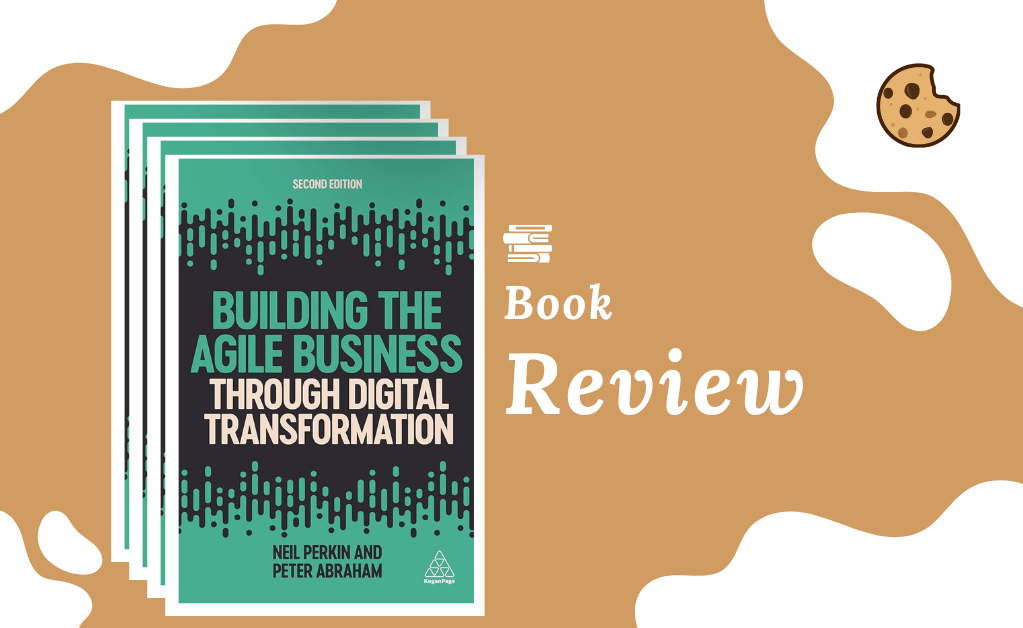Table of Contents
ToggleNavigating a Digital Transformation demands a solid strategy, transcending the outdated “Too big to fail” belief. History has shown us with Kodak, Nokia, MySpace, and Blackberry that complacency is not an option. Agility is imperative. Many organizations embark on this journey, but only a fraction succeed. It requires a lot to achieve the highest level of digital maturity. This is not about superficial adjustments or merely focusing on BAU (business as usual) but a comprehensive overhaul. It requires a genuine metamorphosis of resources, processes, culture, and mindsets. As Nassim Nicholas Taleb articulates, becoming antifragile is essential—organizations need the capability not just to endure change but to excel within it.
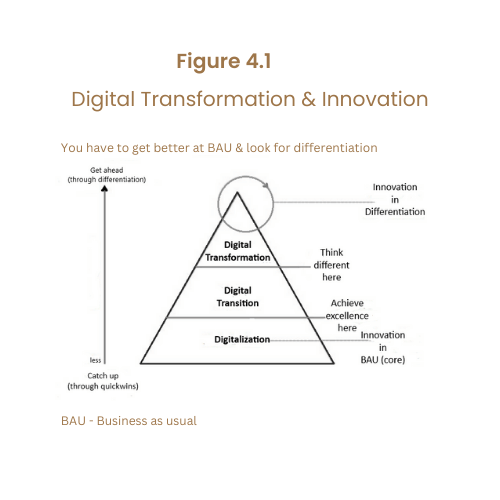
Why This Book?
Neil Perkin and Peter Abraham‘s “Building the Agile Business Through Digital Transformation” serves as an extensive guide for organizations aiming to embrace agility. It delineates the path to becoming an innovative organization that creates differentiating products and services. While not all-encompassing, the book delivers invaluable insights and strategies vital for any transformation leader. As a Digital Transformation Consultant, I regard this book as an indispensable resource, offering expert guidance through concepts, frameworks, and real-life use cases on cultivating an agile business.
Structure of the Book and This Review
The book offers flexible reading options. Beginners in digital transformation and agile practices should follow the authors’ recommended sequence for better comprehension. More seasoned transformation leaders might prefer to jump directly to Part Five, which integrates the tools, techniques, frameworks, examples, and concepts discussed in Parts One through Four. You can then explore the earlier sections for specific details as needed. This book review presents the 5 core dimensions for becoming an agile business, highlights the key concepts for each agile business component, and warns of potential pitfalls for companies where digital transformation has not succeeded.
Key Components of an Agile Business
One of the key information to help transform an organization is to understand its agile business type. It helps the organization determine its digital business maturity (see Figure 4.2 Agile business type), which supports the creation of the organization’s blueprint to create its own digital transformation roadmap. According to Perkin and Abraham, the transformation journey is complex and multifaceted, but regardless the agile maturity of a business type – startup, scaleup, and enterprise – transformation leaders must account for these 5 key components:
- Startup: Focused on early-stage experimentation.
- Scaleup: Growth-oriented, expanding capabilities.
- Enterprise: Mature organizations embedding agility in processes.
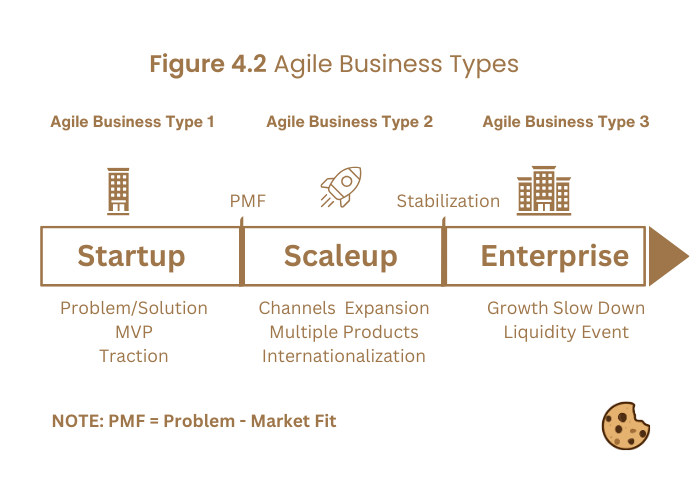
1. People
A common trend among organizations is a sudden peak in interest in the beginning of the digital transformation initiative. There is curiosity and strong interest among team members. Although every person likes to do well, the ‘hype cycle’ (Figure 0.6 Digital transformation leader ‘hype cycle’) usually takes a dip after the team realizes the complex challenges they have to navigate and overcome in this journey. The authors provide great ideas to maintain interest and consistently make progress towards becoming an agile business beyond the initial ‘hype’. Some of these ideas are as follows:
- It is crucial for everyone to share a vision and have the autonomy to execute on these objectives because it promotes inclusivity and ownership.
- Every person’s effort must serve the customer.
- It is important to identify advocates to promote the endeavor and recruit supporters.
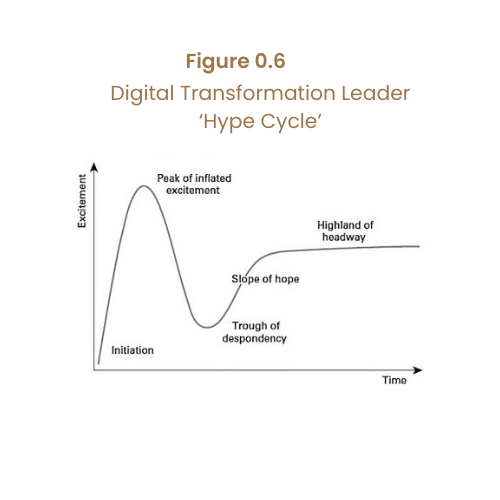
2. Principles
Digital transformation is a multifaceted undertaking with numerous intertwined dependencies. Crafting a playbook to cover every possible scenario and response is impractical. Instead, the organization should align with a unified vision and direction for change; the organization must be oriented around foundational principles, values that shape everyone’s behavior. This approach nurtures a sense of tribalism, fostering shared loyalty and purpose for diverse teams working concurrently and on varying initiatives. The authors offer the idea-driver experience framework (see Figure 0.13 from the book) as a tool that organizations can use to identify and align everything and everyone.
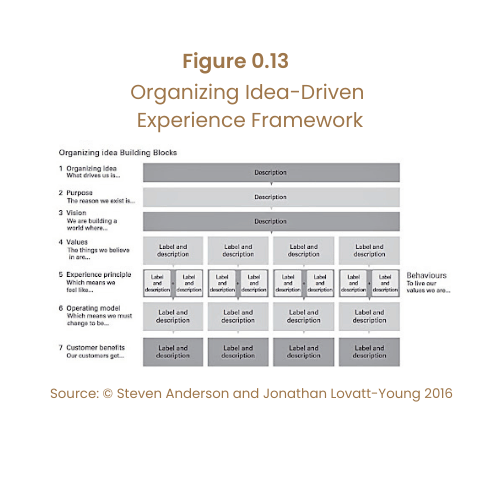
3. Process
In the quest to create a more digital-native framework, organizations aim for speed, focus, and the environment and culture that enables transformative change. Today, organizations must learn to operate fast, iteratively, and in a non-linear model (i.e., run multiple elements concurrently). There is no specific beginning, middle, and an end. It operates in a continuous state of organization flex and flow, which best describes the agile spiral model.
The 3 foundational components of the agile spiral model is summarized below:
- Situation and story – create the reason and impetus for change by leveraging storytelling to appeal to people’s senses and bring them along in the journey.
- Energize and enable – do not just execute but also energize the drivers of change, prioritize the work, remove barriers, build momentum, and amplify positives.
- Flex and flow – support the effort with a network of supporters and collaborators , build on early success, create as many advocates, embed constant experimentation into resourcing, and never stop working to resist inertia (non-action or losing interest).
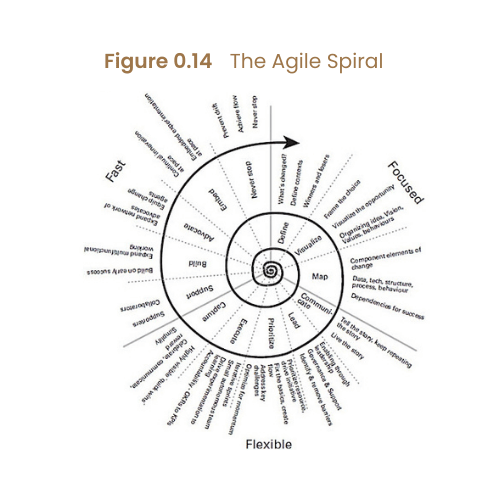
4. Practice
For true transformation to occur, something more fundamental than best practices must happen. Perkin and Abraham emphasize the need to identify the factors that shape everyday behavior. Author Clive Hyland has written about a simple behavioral model that is a helpful tool in recognizing ways to appeal to people’s way of thinking, senses, and intuition to drive the most fundamental and long-lasting change in the organization. This technique is a good tool to use for changing an individual’s habit and can be leveraged to transform an entire organization’s culture and behavior.
- Think – which includes the domain of logic, reason and rational processing.
- Feel – which touches the sense, emotions, relationships, connections.
- Know – which consist of the domain of instinct, intuition or gut feel.
5. Pace
According to Perkin and Abraham, organizational change does not happen instantaneously, and it happens at different times with different pace. There’s a combination of addressing technical challenges and adaptive challenges, which solves more complex and fundamental problems. They are different and cannot be solved rapidly; they will require experimentation, learning, and behavioral change across the organization. Recognizing and understanding the elements and pace of change helps the organization plan, execute, and adjust efforts to drive transformative shifts for an organization to become a true agile business.
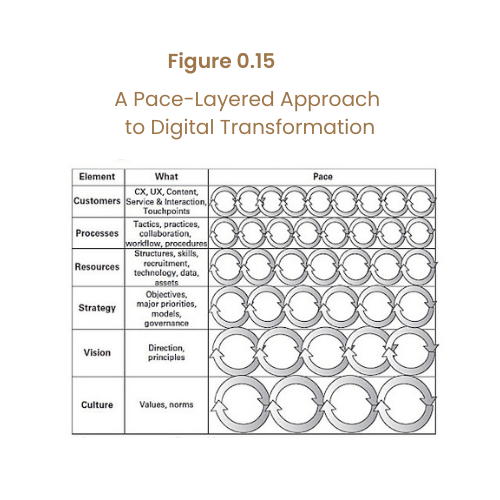
Conclusion
Digital transformation is more than upgrading technology; it requires drastic and fundamental changes (e.g., cultural shift). This book helps transformation leaders create their transformation roadmaps through the 5 key components and leveraging the framework, tools, techniques, and real-life examples. For those ready to lead (or are leading) their organizations into the future, this book is an essential resource. Explore its pages to not only uncover the insights and actionable strategies for your digital transformation journey but also to create your organization’s own agile transformation roadmap.
